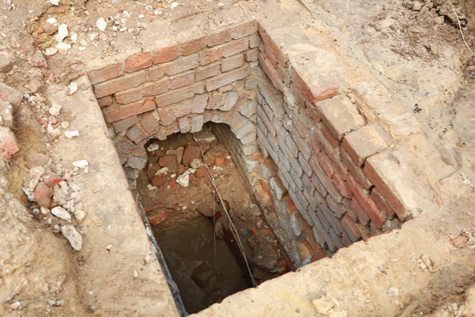By Derek Vouri-Richard, Lemon Project American Studies Graduate Assistant, 2021-2022
On May 23, 1899, husband and wife Samuel Harris and Joanna B. Harris sold land in the Burton District of York County, Virginia to Charles Bartlett, a Black miller and farmer. This land would become the present-day location of Oak Grove Baptist Church. Oak Grove grew out of the First Baptist Church of Williamsburg, Virginia, which was founded by free and enslaved African Americans in the second half of the eighteenth century.
In the late nineteenth century, First Baptist members from York County began establishing their own religious meeting place in the Magruder neighborhood of York County. The Magruder neighborhood served as the home of Oak Grove from the turn of the twentieth century to the early 1940s. In the early 1940s, the Federal Government displaced the church by acquiring the land on which Oak Grove was located through eminent domain policies to develop a military complex. As a member of Oak Grove in the 1940s, Bartlett helped the church establish a new home by selling land he owned to the church. In 1949, Bartlett sold to Oak Grove the land he purchased from Samuel and Joanna Harris in 1899. The history of Oak Grove and the land on which it currently stands is part of the Black mobility and local economy of the Williamsburg area throughout the turn of the twentieth century.
Samuel and Joanna Harris were prominent Black business owners in Williamsburg. In the 1870s, they opened a retail store in Williamsburg, Harris’s Cheap Store. The store sold a variety of goods including dry goods, clothes, furniture and appliances, and clocks and jewelry. It attracted customers outside Williamsburg through the store’s proximity to the Chesapeake and Ohio Railroad. The Harrises purchased land in Williamsburg and the surrounding area as their business grew. In early 1896 Samuel Harris purchased the York County land that he would later sell to Charles Bartlett in 1899. Harris purchased the land in 1896 in a public auction from Richardson Leonard Henley, Bathurst Dangerfield Peachy, and William Henry Edloe Morecock.
The real estate venture between Harris and Henley, Peachy, and Morecock connects the current Oak Grove land to white Williamsburg area residents and institutions of the late nineteenth century. Henley was a lawyer and judge with a law practice in the Williamsburg area. Peachy was a lawyer, owner of the Williamsburg Millinery Company, and real estate venturer. Morecock was a court clerk, merchant, and Secretary to the Board of Visitors for William & Mary from 1877 to 1890. More research needs to be done to further uncover connections between Oak Grove and its land and Williamsburg area people and institutions.
3 Comments





